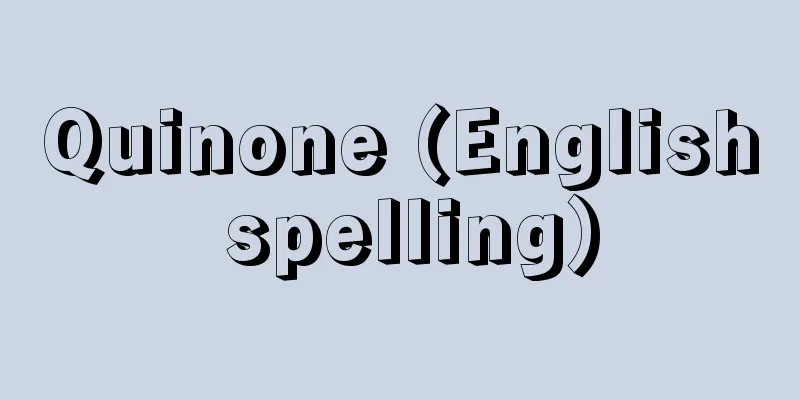Kure - Give

〘Ta Ra 1 〙 ku・ru 〘Ta Ra 2 〙[1] To give something to someone. To give. ① A person gives something to the speaker or someone on the speaker's side. ※Nihon Shoki (720) Kamiyo-jo (Mito Honkun) "Give me the Yasakani no Magatama that you have . " ② Generally, to give something to a person, animal, or plant. It is often used when the recipient's status or position is lower than the giver, or when the speaker is looking down on the recipient. ※Dosa (around 935 ) Shohei 5th Year January 7 "Everything in this long chest has been given to people, and the straw has been given to me." ※Hoshi (1906)〈Kunikida Doppo〉 "I'll give you that hat." ③ To relieve tension. To give room to man. To loosen up. ※Heike (early 13th century) 4 "When the horse's legs reach the limit, give it the reins and let it walk." ④ To dye. [2] Used as an auxiliary verb. It is often attached to the conjunctive form of a verb with the conjunction particle "te." ① It is attached after an action of another person toward the speaker or someone on the speaker's side to show that the action was done kindly or brought benefit or advantage to the speaker. It often includes the meaning of gratitude or supplication. ※Taiheiki (late 14th century) 18 "Please let me enter the castle of Somayama somehow." ※Musui Dokugen (1843) "Go to the place called Ryutafu and tell him to stay there because it's like this." ② Used under the actions of others that have been done to the speaker or those close to the speaker to show that the action was done unkindly or that it has brought about disadvantage or damage to the speaker. ※Ninjyohon Kana Bunsho Musume Setsuyo (1831-34) 3 "You've caused me so much trouble, it's really troubling." ③ Used under the actions of the speaker towards others to show that the action was done unkindly or that it has brought about disadvantage or damage to the other person. Accompanies hostility, contempt, or feelings of spite towards the other person. Do it. ※Toraakira's Kyogen, Hige-yagura (late Muromachi period - early modern period) "He came running with his kimono in order to pluck out his beard." [Additional note] In modern common Japanese, this expression expresses that another person gives something to the speaker, but in the past it also expressed the speaker giving something to another person, animal, or plant. When a speaker gives something to another person, the modern common Japanese word "yaru" is often used, but in many regions, dialects use "kureru."Kure [Kure]Go [Kure]Kusa-ru [Kure]Kure [Kure]Kure [Kure]Source: The Selected Edition of the Japanese Language Dictionary About the Selected Edition of the Japanese Language Dictionary Information |
〘他ラ下一〙 く・る 〘他ラ下二〙[一] 人に物を与える。やる。① ある人が、話者または話者側の者に、物を与える。※書紀(720)神代上(水戸本訓)「汝が持(も)たる八坂瓊の曲玉を予に授(クレ)よ」② 一般に、人または動植物に物を与える。受け手の身分や地位が与え手より低い場合、または、話者が受け手を軽蔑(けいべつ)している場合に用いることが多い。※土左(935頃)承平五年一月七日「この長櫃(ながひつ)のものは、みな人、わらはまでにくれたれば」※帽子(1906)〈国木田独歩〉「そんな帽子お前に呉(ク)れてやる」③ 緊張を解く。余裕を与える。ゆるめる。※平家(13C前)四「馬の足のおよばうほどは、手綱をくれてあゆませよ」④ 染めつける。[二] 補助動詞として用いる。多く動詞の連用形に接続助詞「て」を添えた形に付く。① 話者または話者側の者に対してなされた他者の行為の下に付けて、その行為が好意的になされたり、こちらに利益や恩恵をもたらしたりするものであることを表わす。感謝や懇願の意を含むことが多い。※太平記(14C後)一八「如何にもして杣山(そまやま)の城へ入進(いれまゐら)せてくれよ」※夢酔独言(1843)「龍太夫と云おしの処へいって、〈略〉かくのしだい故留めてくれろといふがいい」② 話者または話者側の者に及んだ他者の行為の下に付けて、その行為が非好意的になされたり、こちらに不利益や損害をもたらしたりするものであることを表わす。※人情本・仮名文章娘節用(1831‐34)三「こんなにわづらってくれちゃア、実にどうも困りきるぜ」③ 話者が他人に対してする行為の下に付けて、その行為が非好意的になされたり、相手に不利益や損害をもたらしたりするものであることを表わす。相手への敵意や、あなどり、あてつけの気持を伴う。やる。※虎明本狂言・髭櫓(室町末‐近世初)「ひげをむしりてくれんとてきっさきをそろへてかかりけり」[補注]現代の共通語では他者が話者に物を与えることを表わすが、古くは話者が他者や動植物に対して物を与える意をも表わした。話者が他者に物を与える場合、現代の共通語では「やる」を用いることが多いが、方言では「くれる」で表わす地方も少なくない。
くれ【呉】ご【呉】くさ・る【呉】くれ【呉】くれ【呉】出典 精選版 日本国語大辞典精選版 日本国語大辞典について 情報 |
Recommend
Ofunasama - Ofunasama
...The spirit of the ship may also be replaced wh...
Rhinoptera javanica (English spelling) Rhinoptera javanica
...They give birth to 5-8 young in the summer. Th...
Cytokinin - Saikainin (English spelling)
A group of plant hormones. A general term for a g...
Atakemaru
[1] A large warship built by Shogun Iemitsu in 163...
James Albert Michener
American novelist and educator. Born in New York ...
Meilleurs ouvriers de France
...From a national perspective, there are policie...
Ishiguro Party
…The "Atsuokuri Festival" is held on th...
Henningsen, A.
...Leader Jorgensen soon converted to Catholicism...
Ionian chiton - Ionian chiton
…the most common garment worn by the ancient Gree...
Prime Minister - Naikakusouridaijingin
The Minister of State is the head of the Cabinet. ...
Morava [river] - Morava
A tributary of the Danube. It flows north through ...
Photoreading
… [Reading] It is said that there are three stage...
Mastodon - Mastodon (English spelling)
It is a type of SNS (social networking service). U...
Damask rose
...This was discovered in southern France around ...
Moro tribe - Moro (English spelling)
A general term for Muslims living in the Philippin...









